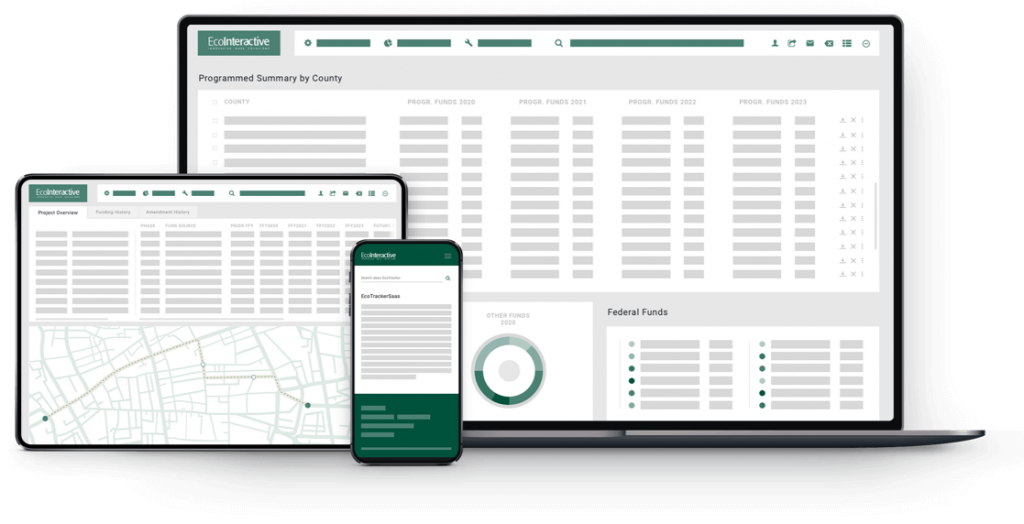Kristen Z, Transportation Planner
[<5 Minute Read]
What is a STIP?
One of the core planning initiatives for state Departments of Transportation (DOTs), the “Statewide Transportation Improvement Programs” (or STIPs) are an important on-going program for DOTs. STIPs contain a lot of information but the most popular information is usually the transportation project listings. STIPS list all of the projects (and their funding sources) taking place on the statewide transportation system over the next four years. They also itemize all projects associated with all statewide transportation initiatives and programs planned for the same time period (the next four years).
Projects are listed as individual projects (i.e. a modernization project to re-configure an interchange on a highway) or as “bucket projects / programs” (i.e. on-going transit operations funding program). STIPs include projects funded with federal funding, state funding and local government funding. In fact, federal funding cannot be obligated for any particular project unless it is listed in the STIP. STIPs program billions of dollars and include hundreds of projects. They must be “fiscally constrained”, which means they must demonstrate that the sum total cost of all of the projects in the STIP is less than or equal to the estimated revenues over the same time period. EcoInteractive’s Project Tracker is an industry standard software DOTs use to administer their STIP programs.
Why is a STIP Developed?
STIPs are developed for several reasons. For one, they are required. For several decades now, federal transportation legislation has required State DOTs develop and maintain STIPs. They also serve as a means for States to show how the federal funding and state funding they administer is being invested across the state and its many transportation modes. Finally, STIPs are a way for states to demonstrate their priorities to the public, to the media and to regulators. EcoInteractive’s Project Tracker software comes standard with a public facing portal to view STIP projects.
Why Is the STIP Important?
As a federal requirement, the STIP is very important! Development and maintenance of a STIP is a requirement for states to continue to receive and administer federal transportation funding. States receive hundreds of millions of dollars in federal funding every year and it is imperative not to jeopardize that funding. In addition, the STIP is an important document in a state’s efforts to inform the general public of the projects it is funding. EcoInteractive’s Project Tracker software comes standard with a public facing portal to view STIP projects.
Who Participates in the STIP Process?
Many different people and organizations participate in the STIP process. Depending on how the DOT is organized, there are often staff from multiple DOT departments involved in the STIP process. Also, the DOT coordinates with all of the Metropolitan Planning Organizations (MPOs) in the state because DOTs must include the currently adopted Transportation Improvement Program (TIP) from each MPO in the state in its STIP. The DOT sends each STIP update / amendment to the Federal Highway Administration (FHWA) Division Office and to the Federal Transit Administration (FTA) Regional Office because federal regulations require approval from both agencies. During each update and amendment cycle, DOTs offer opportunities for input from the general public. EcoInteractive’s Project Tracker software comes standard with a public facing portal to view the projects and a module to coordinate with MPOs and federal regulators.
Who Benefits from the STIP?
The STIP benefits the DOT by ensuring it stays compliant with federal regulations. It also benefits the DOT by providing a means of demonstrating their investments across the state to legislators, the general public and local governments. MPOs benefit from the STIP by sharing their investments to a wider audience at the state level and the general public benefits by seeing how their state and federal tax dollars are invested.
What is the difference between STIP and TIP?
The STIP is produced and maintained by the state DOT and it includes projects that are taking place across the entire state. The TIP is produced and maintained by an MPO and it includes projects that are taking place within the MPO area. The STIP includes the current TIP from each MPO in the state.
Best Practice for Managing STIPs
The “Best Practices In Managing STIPS, TIPS, And Metropolitan Transportation Plans In Response To Fiscal Constraints” provides a very good summary of the best practices and examples of overall STIP management from several DOTs. It covers STIP development and implementation practices, revenue estimating techniques, cost estimating techniques and overall guidance on how to meet the federal “year of expenditure” requirement. It was compiled as part of NCHRP Project 20-68A, the U.S. Domestic Scan program. This program was requested by the American Association of State Highway and Transportation Officials (AASHTO) with funding provided through the National Cooperative Highway Research Program (NCHRP).
Loved this post and want to learn more? Check out what we’ve done for some of our customers and see how transformative a modern database can be when it comes to managing transportation data!


